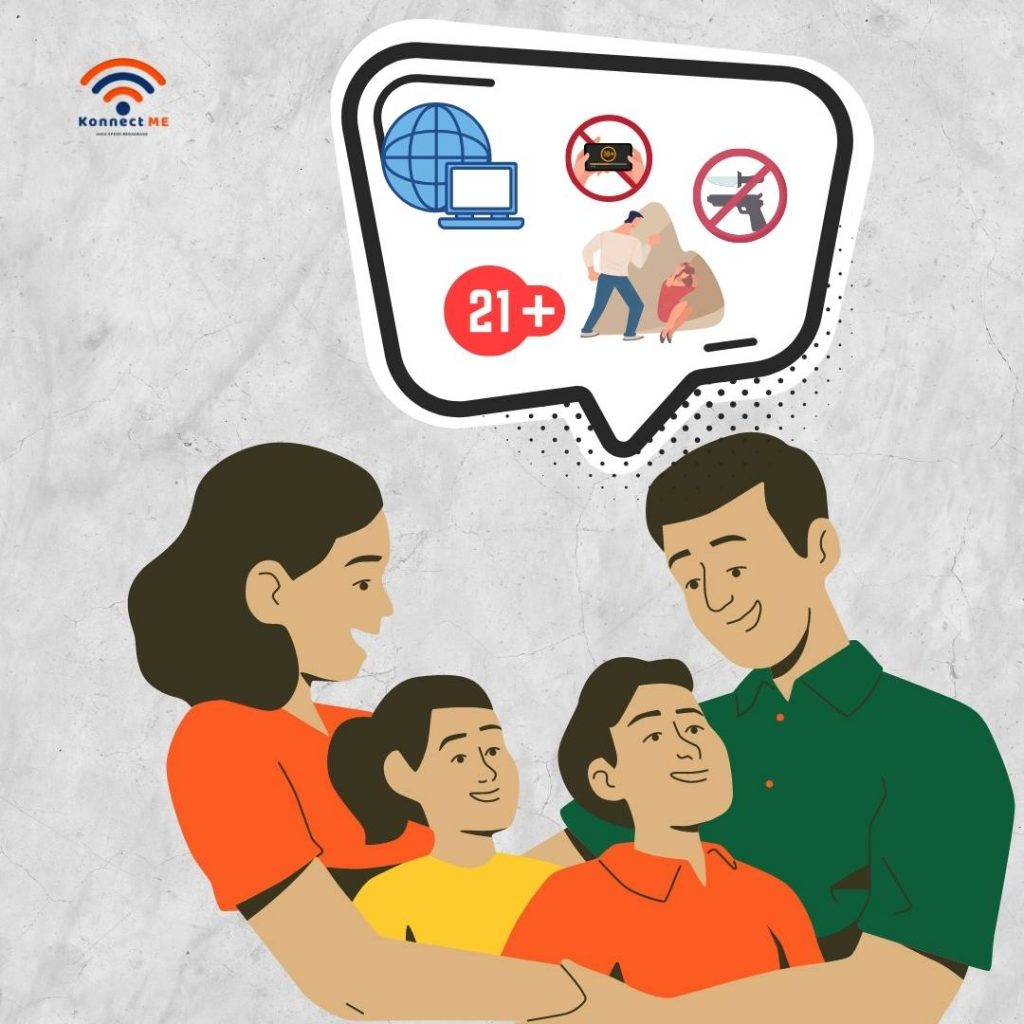
Living the the Internet age has its perks. We have access to resources our parents never dreamt of, we can learn remotly, watch silly cat videos. And yet, it also comes with threats. Our kids are being exposed to violent or pornographic content that is so easy to access we often don’t know how to prevent them from seeing. This is where parental controls come handy.
Parental controls are meant for helping parents to protect their kids from inappropriate or adult content on the internet. Parents are able to block access to inappropriate websites containing inapropriate and harmful content we want our children to be protected from. There are various ways for doing this while using broadband including satellite broadband in Ireland. You can configure network-wide parental control on your router. Also, you can build controls into Windows or third-party software.
Web Filtering Parental Controls
Web filtering is the best option when you need to restrict the use of the web for your children. It can stop them from accidentally stepping into the adult corners of the Internet.
Though you can prevent kids from browsing the web, teenagers can find ways to refute the controls if they are desperate to surf it. If you want to learn how to set parental control, keep reading this blog.
How to implement parental controls to keep kids away from inappropriate content?
Control on Router
It is perhaps the easiest way of setting up parental control. You need to configure the controls on your router. Your router acts as the choke point where all the internet traffics for your network runs through. By setting these controls, you can filter the webs for all the devices on the network provided by a single satellite internet provider. This trick can help you control your smartphones, tablets, computers, or anything else that is empowered by your network.
Some routers are already built with parental controls. If you have such a router, then the filtering will happen manually, and you will not need to do anything. All you need is to read the manual provided by the router and activate the parental controls.
Control on Windows 7
Windows 7 possesses some in-built parental controls that enable you to control the time a user account can remain logged in the computer or laptop and what programs the device can use. If your kids use a different user account on your computer or laptop, this trick is going to help you a lot. In this context, it is important to note that Windows 7 does not include the web filtering feature.
Microsoft provides a program named Family Safety. It lets you set up a web filtering feature on Windows 7. You need to install this program on your computer or laptop to manage its settings from Microsoft’s Safety website. With high-speed broadband in Ireland, you can easily download this program and set up parental control on your computer or laptop.
Control on Windows 8 & 10
Windows 8 and 10 have incorporated parental controls that fuse time limits of Windows 7 and program access controls along with Family Safety’s web filtering feature.
You can access your settings and view reports from the same website (Family Safety). You need to check whether it’s a child’s account or not. A box with the statement “Is this a child’s account?” will pop up whenever a new user will try to access an account on your Windows 8. You can mark your child’s account and control the access. For this feature, you will do nothing except a steady service from a reliable satellite internet provider.
Apart from the methods discussed above, you can implement parental control with the help of third-party software.
VPNs
Access to Internet exposes our networks to external threats and
Access to Internet exposes our networks to external threats and it is often advisable to utilise VPNs for better protection of our devices and networks. We have to remember that kids rarely think about safety when accessing websites so their activities can compromise the safety of our devices exposing our passwords, access to online banking and even web cameras. VPNs can help us mask our IPs and where are we connecting from.